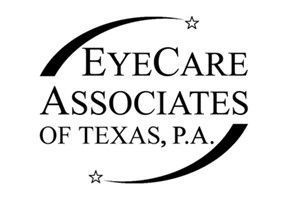Article
How Glaucoma Affects Eye Health
Glaucoma, a complex and potentially sight-threatening condition, poses significant challenges to eye health worldwide. As one of the leading causes of irreversible vision loss, glaucoma demands attention and understanding to mitigate its impact effectively.
Read on to learn about glaucoma's causes, symptoms, diagnosis, treatment options, and preventive measures.
What Is Glaucoma?
Glaucoma is a progressive eye condition that damages the optic nerve, primarily due to elevated intraocular pressure (IOP). The brain receives visual information from the eye through the optic nerve. Damage to this nerve can result in irreversible vision loss and even blindness if not managed effectively.
Causes of Glaucoma
The primary cause of glaucoma is an imbalance between the production and drainage of aqueous humor, the fluid that circulates within the eye. When the drainage channels become blocked, or the fluid production exceeds the drainage capacity, it increases intraocular pressure. This elevated pressure gradually damages the optic nerve, resulting in vision impairment.
Other factors contributing to glaucoma risk include:
- Family History: Those who have a family history of glaucoma are at a higher risk of developing the condition.
- Age: Glaucoma predominantly affects older adults, with the risk increasing with age.
- Ethnicity: Certain ethnic groups have a higher prevalence of glaucoma and are at an increased risk of severe vision loss.
- Medical Conditions: Some conditions, such as diabetes, high blood pressure, and heart disease, can increase the risk of glaucoma.
- Eye trauma: Trauma or injury to the eye can damage the optic nerve and increase the risk of glaucoma development.
Is Glaucoma Hereditary?
Glaucoma can have a hereditary component. Individuals with a family history of glaucoma have a higher risk of developing the condition compared to those without a family history. The risk is particularly elevated in individuals with first-degree relatives, such as parents or siblings, affected by glaucoma. Scientists have identified specific genetic mutations associated with glaucoma, highlighting its hereditary nature.
Glaucoma Types
There are several types of glaucoma, each with distinct characteristics and underlying mechanisms:
Open-Angle Glaucoma
This is the most common type of glaucoma, characterized by a gradual increase in intraocular pressure due to impaired drainage of aqueous humor through the trabecular meshwork. It typically progresses slowly and may not cause noticeable symptoms until later stages.
Angle-Closure Glaucoma
In angle-closure glaucoma, the drainage angle between the iris and cornea becomes blocked, leading to a sudden increase in intraocular pressure. This type of glaucoma can cause acute symptoms such as severe eye pain, headaches, and blurred vision.
Secondary Glaucoma
Secondary glaucoma occurs due to underlying medical conditions or eye injuries that affect the drainage of the aqueous humor. Conditions such as uveitis (inflammation of the eye) or trauma can lead to increased intraocular pressure and optic nerve damage.
Normal-Tension Glaucoma
In normal-tension glaucoma, optic nerve damage occurs despite normal intraocular pressure. The exact mechanism underlying this type of glaucoma is not fully understood, but factors such as impaired blood flow to the optic nerve may play a role.
Congenital Glaucoma
Congenital glaucoma occurs at birth or develops during infancy. It is often caused by structural abnormalities in the eye's drainage system, leading to elevated intraocular pressure and optic nerve damage if not treated promptly.
Glaucoma in Infants
Congenital glaucoma is a rare but serious condition that can affect infants shortly after birth. It is typically caused by abnormalities in the development of the eye's drainage system, leading to elevated intraocular pressure. Infants with congenital glaucoma may exhibit symptoms such as excessive tearing, sensitivity to light, clouding of the cornea, and enlarged eye size. Early diagnosis and intervention are essential to prevent vision loss and promote healthy eye development in infants with glaucoma.
Symptoms of Glaucoma
Glaucoma typically does not cause noticeable symptoms in its early stages. But when the illness worsens, people could encounter:
- Gradual loss of peripheral (side) vision
- Blurred vision
- Halos around lights
- Eye pain
- Headaches
- Nausea and vomiting (brought on by acute angle-closure glaucoma)
It is important to note that the symptoms of glaucoma can vary depending on the type and stage of the condition. Regular, comprehensive eye examinations are crucial for detecting glaucoma in its early stages before significant vision loss occurs.
Diagnosis of Glaucoma
Diagnosing glaucoma typically involves a comprehensive eye examination performed by an eye care professional. The following tests may be conducted to assess the presence and severity of glaucoma:
- Intraocular Pressure Measurement: This test uses a tonometer device to measure the pressure inside the eye.
- Visual Field Testing: Visual field tests assess peripheral vision by measuring the ability to see objects in different areas of the visual field.
- Optic Nerve Evaluation: An examination of the optic nerve using specialized instruments such as an ophthalmoscope or optical coherence tomography (OCT) to detect signs of damage.
- Gonioscopy: Gonioscopy is a procedure used to evaluate the eye's drainage angle to determine any blockages or abnormalities.
Early detection of glaucoma through regular eye examinations is crucial for initiating timely treatment and preventing vision loss.
Treatment Methods for Glaucoma
The treatment approach for glaucoma aims to lower intraocular pressure and prevent further damage to the optic nerve. Treatment options may include:
- Medications: Eyedrops or oral medications may be prescribed to reduce intraocular pressure by decreasing fluid production or improving drainage.
- Laser Therapy: Laser trabeculoplasty or iridotomy may be performed to improve drainage of aqueous humor and reduce intraocular pressure.
- Microsurgery: Surgical procedures such as trabeculectomy or implantation of drainage devices may be recommended for individuals with advanced or uncontrolled glaucoma.
- Minimally Invasive Glaucoma Surgery (MIGS): MIGS procedures involve less invasive techniques to improve aqueous humor outflow and reduce intraocular pressure.
Treatment choice depends on various factors, including the type and severity of glaucoma, overall health status, and individual preferences. Regular follow-up visits with an eye care specialist are essential for monitoring glaucoma progression and adjusting treatment.
Preventive Measures
There are steps people may take to reduce the impact of glaucoma or lower their risk of getting the condition, even though some risk factors, such as age and family history, cannot be changed:
- Regular Eye Examinations: Routine eye check-ups are essential for early glaucoma detection and prompt treatment initiation.
- Healthy Lifestyle Habits: Maintaining a healthy diet, exercising regularly, and avoiding smoking can promote overall eye health and reduce the risk of glaucoma.
- Medication Adherence: Individuals prescribed medications for glaucoma should adhere to their healthcare provider's treatment regimen to manage intraocular pressure effectively and prevent vision loss.
- Eye Protection: Wearing protective eyewear during sports or activities that pose a risk of eye injury can help prevent traumatic glaucoma.
- Awareness and Education: Educating oneself about glaucoma, its risk factors, and its symptoms can empower individuals to seek timely medical attention and proactively manage the condition.
Glaucoma is a sight-threatening eye condition characterized by optic nerve damage and progressive vision loss. People can take proactive measures to diagnose and manage glaucoma successfully, thereby protecting their vision for the future. If you want comprehensive eye care service, our team at
Eyecare Associates of Texas, P.A., can help you.
Reach out to schedule your eye examination for optimal vision and early detection of potential glaucoma issues.
Related Articles
Related Articles

STAY UP TO DATE
GET PATH'S LATEST
Receive bi-weekly updates from the church, and get a heads up on upcoming events.
Contact Us
We will get back to you as soon as possible.
Please try again later.


CEDAR HILL LOCATION
Business Hours:
Monday: 8:00 am - 5:00 pm
Tuesday: 8:00 am - 5:00 pm
Wednesday: 8:00 am - 4:00 pm
Thursday: 8:00 am - 5:00 pm
Friday: 8:00 am - 12:00 pm
Saturday: Closed
Sunday: Closed
GRAND PRAIRIE LOCATION
Business Hours:
Monday: 8:00 am - 5:00 pm
Tuesday: 8:00 am - 5:00 pm
Wednesday: 8:00 am - 1:00 pm
Thursday: 8:00 am - 5:00 pm
Friday: 8:00 am - 12:00 pm
Saturday: Closed
Sunday: Closed
CEDAR HILL LOCATION
Business Hours:
Monday: 8:00 am - 5:00 pm
Tuesday: 8:00 am - 5:00 pm
Wednesday: 8:00 am - 4:00 pm
Thursday: 8:00 am - 5:00 pm
Friday: 8:00 am - 12:00 pm
Saturday: Closed
Sunday: Closed
GRAND PRAIRIE LOCATION
Address
Phone:
(513) 901-4811
Fax:
(866) 353-7586
Business Hours:
Monday: 8:00 am - 5:00 pm
Tuesday: 8:00 am - 5:00 pm
Wednesday: 8:00 am - 1:00 pm
Thursday: 8:00 am - 5:00 pm
Friday: 8:00 am - 12:00 pm
Saturday: Closed
Sunday: Closed


